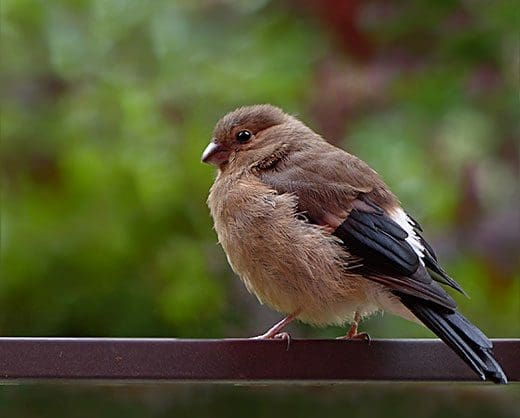K-State Research and Extension news service
Manhattan, KS– Outdoor gardening may fall to the wayside in the winter months, but some bird species stick around through the cold. Kansas State University horticulture expert Ward Upham said food is the resource most lacking for birds during the winter, and they will flock to your feeder.
“Different bird species do prefer different grains, but black oil sunflower seed has universal appeal for most species,” Upham said. “White proso millet is a second favorite for most species. If you want your feeder to have broad bird appeal, then consider putting out a mix with a high percentage of these seeds.”
If you are looking to attract a particular species, listed below are some common birds and their preferred seed. “To really up your bird-feeding game,” Upham said, “you may also consider buying multiple feeders for multiple species.”
- Cardinals, evening grosbeak, most finches: sunflower seeds, all types.
- Rufous-sided towhee: white proso millet.
- Dark-eyed junco: white and red proso millet, canary seed, fine cracked corn.
- Many sparrows: white and red proso millet.
- Bluejay: peanut kernels and sunflower seeds of all types.
- Chickadees, tufted titmouse: peanut kernels, oil (black) and black-striped sunflower seeds.
- Red-breasted nuthatch: oil (black) and black-striped sunflower seeds.
- Brown thrasher: hulled and black-striped sunflower seeds.
- Red-winged blackbird: white and red proso millet, German (golden) millet.
- Mourning dove: oil (black) sunflower seeds, white and red proso, German (golden millet).
Upham also noted that winter’s cold means that water will freeze, making it unavailable to birds. A heated birdbath attracts birds in droves when all other water is frozen. If the heated birdbath contains a built-in thermostat, the energy usage is far less than people expect.
For more information about backyard birding and birdfeeding, Chuck Otte, a retired K-State Research and Extension agriculture and natural resources agent in Geary County, has provided a series of online guides.
Upham and his colleagues in K-State’s Department of Horticulture and Natural Resources produce a weekly Horticulture Newsletter with tips for maintaining home landscapes. The newsletter is available to view online or can be delivered by email each week.
Interested persons can also send their garden- and yard-related questions to Upham at wupham@ksu.edu, or contact your local extension office.













